This article is more than 5 years old.
I recently began work on repairing an important book in our special collections, and thought I’d share the process of preservation. The book is loaded down with a long French title, but is known as Diderot’s “Tree of Knowledge.” The “Tree of Knowledge” was an attempt to represent the structure of knowledge graphically and was somewhat based on the work of Francis Bacon. Special Collections book historian, Megan Mulder, could tell you much more about Diderot and the “Tree of Knowledge” than I can. I can tell you that our volume was printed in 1780. The paper in this book is wonderfully healthy after over 200 years.
The primary problem with our “Tree of Knowledge” (TOK) was the front board was detached and there were some minor paper tears. The interior hinge must be repaired first. Repairing the exterior hinge before the interior hinge will result in the repair you had made on the exterior popping off. Physics.
I measured and tore a piece of toned Japanese paper for the inside hinge repair, glued it out and applied it to the inside hinge. Any paper used in repairs are always torn to give a softer edge when it is applied to the paper. A cut edge can eventually cut into the paper. The interior hinge repair is allowed to dry open.
There were a few paper tears on the TOK, which is a large (38 1/2″ x 24″) folded and illustrated engraving of all the fields of knowledge just past the title page of the book. It folds out into 9 panels and had a few small tears.
I applied a natural colored Japanese paper (Sekishu) to three small tears on the reverse side of the large panel.
The exterior hinge of the book was completely torn, leaving a break in the leather. I was able to lift the leather off the boards revealing the attachment of the text block to the board with leather cords which were inserted through the boards. This work is beautifully done and very uniform. I doubt it has been seen by anyone in many years. Today, individuals who do this work are considered artisans….in 1780, binders were mere craftsman. I love seeing the guts of a book.
I tore a sheet of toned Japanese paper which I applied to the board and overlapped it onto the spine.
One of the leather labels had come off the spine. I glued the label back in place and filled several small openings in the spine with Japanese paper. I then glued down the leather of the cover making a clean and not too noticeable repair.
This repair was pressed into place using a teflon bone folder and allowed to dry under a weight.
The final step is to apply a leather consolidant to the covers. This helps keep the leather from dissolving into a powder and also improves the appearance.
The book is now ready to return to the Special Collection closed stacks to amaze our patrons.



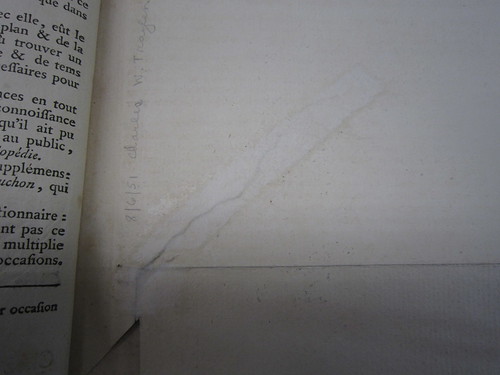
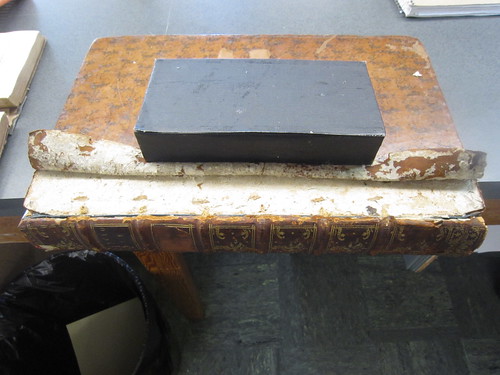
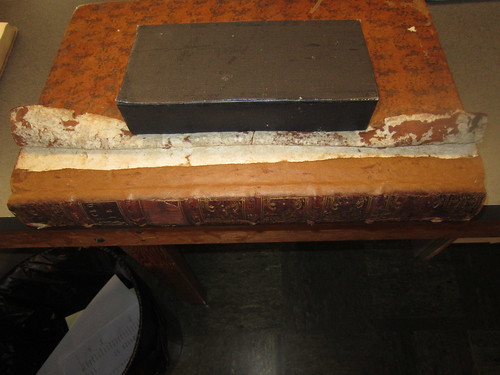
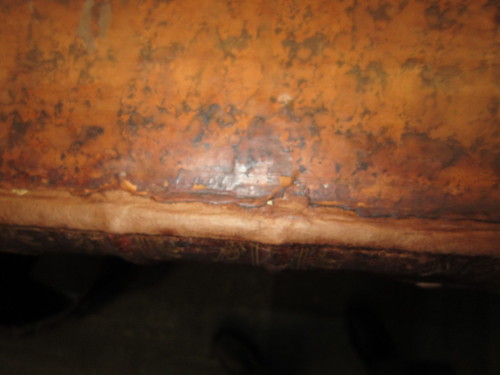
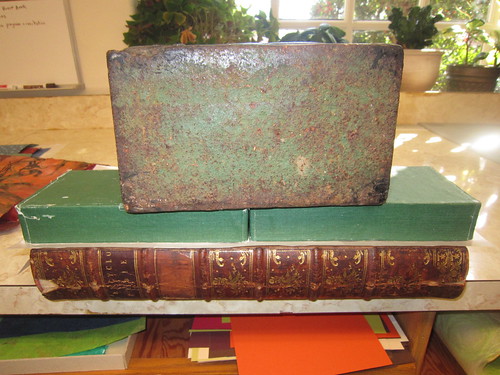

8 Comments on ‘Preserving Diderot’s “Tree of Knowledge”’
Incredible.
Very cool. I loved the one-word explanation of the order of the hinge repair: “Physics.” Made me chuckle. 🙂
Thanks for sharing your talents with us, Craig!
Beautiful job,Craig. I love the work of artisans.
Love this! Especially the notion of “healthy paper.”
Wonderful.
This is actually the first volume of Diderot’s famous Encylopedie, which eventually extended to 28 volumes with over 70,000 articles and 3,000 illustrations. The Encyclopedie is an epic expression of French Enlightenment thought, and the famous Tree of Life frontispiece is a visual depiction of Enlightenment philosophy, with all knowledge stemming from Reason and Science.
ZSR is very lucky to have complete holdings of the first edition of the Encyclopedie in Special Collections!
I love this! Beautiful! (And–Tree of Knowledge!!!)
Chouette!